Take your lounge area to the next level with stylish coloured concrete wall designs that are both unique and functional. Concrete is a versatile material that can be transformed into a stunning design element of your room. Colored concrete is typically achieved by adding pigments to the concrete mix, staining the surface, or using color hardeners.
The vast palette at a designer’s disposal allows for creating unique, visually captivating spaces that blend with the existing style or act as striking design features. Leveraging colored concrete’s versatility, interior designers use it in various applications, such as flooring, walls, countertops, furniture, and decorative accessories. Its simplistic elegance, durability, and low maintenance cost make it an attractive design element.
Colored concrete also enters kitchen and bathroom design with countertops and basins, creating a sleek, modern aesthetic.Here are ten coloured concrete wall ideas that will make your lounge area the envy of your friends and family.
How Is Coloured Concrete Used To Transform Wall Designs?
Colored concrete is a decorative concrete variant that uses a particular ingredient – pigment – enhancing the usual grey cement we’re all familiar with and turning it into something extraordinary. This pigment infusion gives colored concrete bold, distinctive colors that can breathe life and vibrancy into any concrete project.
One of the critical concepts behind colored concrete is the addition of oxide pigments into the concrete aggregate. These pigments create various hues, providing a new twist to traditional concrete. The pigments blend perfectly with the cement, and the final result is a unified, depth-rich colored concrete that offers an array of design possibilities.
Colored concrete is not limited to outdoor applications like driveways and walkways. The interior usage of this material is rapidly growing, particularly in wall designs. Whether you’re going for a modern minimalist look or embracing an industrial aesthetic, colored concrete can achieve it all. With the robustness and the somber appeal of concrete, added with the elegance of color, your lounge walls/interiors can be transformed into a strikingly stylish and durable space.
Colored concrete’s versatility and adaptability don’t stop there. By creating different finishes and textures, employing grainy textures to super-smooth polished surfaces, or even using patterns and stencils, colored concrete pushes the boundaries of your creative design process.
Exploring Decorative Concrete As A Versatile Design Option
Colored concrete is an advanced version of the standard grey concrete, now enhanced with specialized pigments to produce a vibrant, bold look. These pigments, made of oxide pigments, are blended with cement and aggregate, resulting in various hues that can suit any design theme.
Decorative concrete, conversely, encompasses a broader range of techniques and applications, including colored concrete, stamped concrete, and polished concrete. These options create stunning visual styles while retaining the highly desirable qualities of traditional concrete, such as durability and low maintenance.
The Many Faces Of Coloured And Decorative Concrete
In recent years, the popularity of colored and decorative concrete has soared as it found its way into various projects like driveways, walkways, patios, pool decks, and interior spaces. With a vast array of colors and textures to choose from, colored concrete has revolutionized the way we perceive this usually plain building material. Some of the widely used applications for colored concrete include:
- Stamped Concrete: Concrete stamped with patterns and finished with a colored oxide pigment, yielding an appearance mimicking tiles, brick, wood, or natural stone.
- Polished Concrete: By polishing and utilizing colored concrete, you can achieve a smooth, glossy surface perfect for contemporary, minimalistic, or industrial-style décor.
- Acid Stain and Water-Based Stain: Applying acid-based or water-based stains to existing concrete surfaces creates marbled, gradient, or translucent effects, enhancing the character of any space used.
- Concrete Overlays: Featured with various colors and patterns, overlays transform dull, aged surfaces into welcoming, colorful, and textural spaces.
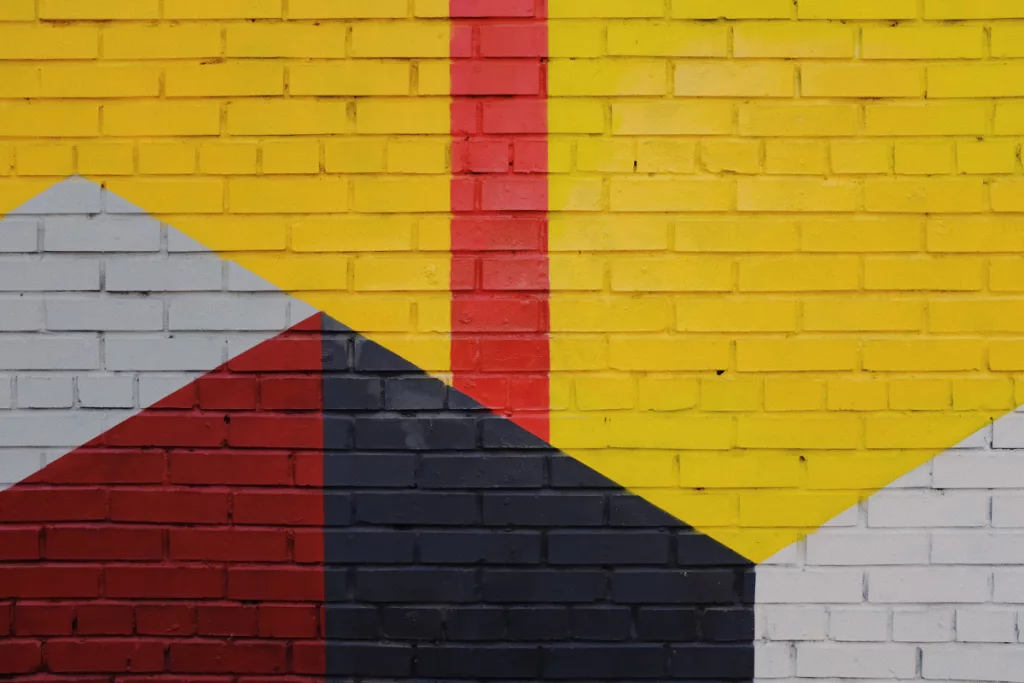
Why Choose Coloured And Decorative Concrete For Your Projects?
The benefits of colored and decorative concrete go beyond their aesthetic appeal. Here are some of the top advantages when choosing this versatile design material:
- Durability: Coloured and decorative concrete is known for its strength and resilience. It lasts longer than most alternative materials, requiring minimal maintenance and repairs.
- Customization: With an extensive range of colors and textures, you can create unique designs that blend harmoniously with any interior or exterior theme you have in mind.
- Eco-Friendly: Coloured concrete helps reduce waste, enabling the repurposing and transformation of existing concrete surfaces.
- Cost-Effectiveness: While delivering high-quality design results, colored concrete is a cost-effective solution, given its durability and low maintenance requirements.
Understanding Integrally Coloured Concrete And Its Design Potential
Integrally colored concrete is a method in which color is mixed directly into the concrete before it is poured and set. This technique offers extensive design possibilities and is regarded for its bold color expressions and durable finish.
In essence, integrally colored concrete integrates consistent, uniform color throughout the entire concrete slab. The technique involves adding pigment directly into the concrete mix, ensuring color permeates the entirety of the structure rather than just the surface.
Benefits Of Integrally Coloured Concrete
The use of integrally colored concrete comes with a myriad of benefits:
- Durability: Since the pigment is mixed into the concrete, the color remains consistent even if the surface wears or chips over time. This characteristic makes it a preferred choice for high-traffic areas.
- Long-lasting Colour: Unlike topical treatments, the color in integrally colored concrete is permanent and less prone to fading over time.
- Design Versatility: You can achieve almost any hue with various pigments available. With modern technologies and pigment innovations, options from earthy natural tones and vibrant shades to soft pastels are achievable.
The Design Potential
Integrally colored concrete offers immense design flexibility. Here are some design possibilities:
- Monolithic Look: For a modern, minimalist aesthetic, use a single, bold hue, which can serve as a dramatic design statement.
- Mimic Natural Materials: Use shades that mimic stone, terrazzo, or marble for a cost-effective alternative to expensive natural materials.
- Layered Colours: Mix different pigments in separate concrete batches and pour them into layers to create a unique, multi-hued effect.
The Magic Of Coloured Concrete – Adding Colour To Your Spaces
Colored concrete is just regular concrete mixed with special dyes or stains. So, instead of being its usual grey, concrete can come in different colors. This concrete type can completely change a place’s look and feel. The process is quite simple. When mixing the concrete, a particular color or dye, known as oxide pigments, is added. These pigments are incorporated into the concrete while it is still wet. The result? A concrete mixture that is rich in color will stay even when the concrete sets and hardens.
Colored concrete can make any space look fantastic. It’s like getting a new coat of paint for your room, but instead, it’s for your floors, driveways, or even walls. You can have your concrete in earthy tones for a natural feel or vibrant colors for a fun and lively atmosphere.
Moreover, you can even add textures to your colored concrete. Think of it as giving your concrete a fun makeover. With the right tools and techniques, colored concrete can look like bricks, wood, or stones.
Apart from making your space look beautiful, colored concrete is also solid and long-lasting. Like regular concrete, it can handle harsh weather conditions or heavy use. And because the color is mixed into the concrete, you don’t have to worry about it chipping or fading away quickly.
10 Stunning Coloured Concrete Wall Design Ideas For Your Lounge
Utilizing colored concrete in your home’s lounge isn’t limited to the floor. Walls are another wonderful canvas to display the rich, vibrant allure of colored concrete. Here are ten stunning colored concrete design ideas for your lounge that will create a space of comfort and style.
- Exposed Aggregate, Colored Concrete: The exposed aggregate technique leaves tiny, small stones visible, giving a rustic yet modern feel. Consider using warm brown or grey shades to complement a cozy lounge area.
- Acid-Stained Teal Concrete Wall: Acid-stained techniques create a marbled effect. A deep teal acid-stained concrete wall provides a creative, eye-catching aesthetic that can be a beautiful backdrop to a spacious lounge.
- Vertical Stamped Coloured Concrete: Resembling natural stone, wood, or bricks, depending on the stamp used, this design idea gives a touch of rustic appeal. A muted earth tone would go very well with this design style.
- Burnt Orange Polished Concrete Wall: A polished, high-gloss concrete wall in a rich, burnt orange can create a statement piece in your lounge. This warm, inviting color beautifully reflects light, adding to the ambiance.
- Eco-Friendly Green Concrete Wall: Made from sustainable materials, eco-friendly concrete in a soft, pastel green shade can inject a calm, natural vibe into the lounge while being mindful of the environment.
- Neutral-Toned Concrete Wall With Accent Colour: Pair a neutral-colored concrete wall with a bold accent color. For example, match a soft grey concrete wall with a bold blue lounge couch for a striking, stylish contrast.
- Textured Concrete Wall In Soft Yellow: Texture adds depth and dimension. A warm, soft color on a concrete wall with textured patterns helps to create a cozy, cheerful atmosphere in the lounge.
- Geometric Patterned Concrete Wall: Create geometric designs on your wall using stencils or engraved patterns. A hue of dark brown or grey highlights the modern geometric patterns.
- Concrete Wall With Colourful Mosaic Inserts: Add colorful mosaic tiles or broken glass to a neutral, small, scaled concrete wall for instant color. This creates a unique feature wall and serves as an excellent conversation starter.
- Black Polished Concrete Wall: Nothing speaks elegance like a polished black concrete wall. This daring choice can add a sophisticated, sleek appeal to your lounge, pairing well with light furniture to create a balanced contrast.
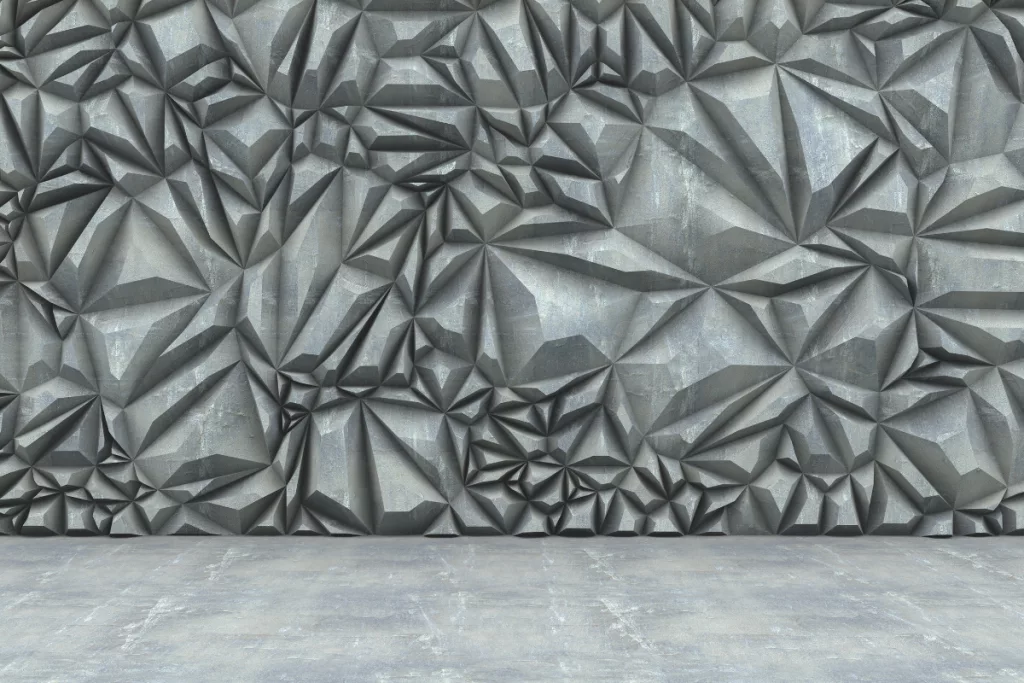
Choosing The Right Colouring Method For Your Concrete Wall
Colouring concrete can significantly enhance the aesthetic appeal of your space. However, selecting the proper method can be challenging due to the variety of options available. Here are some popular coloring techniques to help you make an informed decision.
- Integral Colouring: Integral coloring involves adding pigment directly to the concrete mix before it’s poured, providing a consistent, thorough face. It’s an excellent option for large projects or areas where complete uniformity of color is required. However, the color options may be slightly limited compared to other methods, and it might be challenging to change or correct the color once the concrete is set.
- Stains: Acid and water-based stains chemically react with the concrete to create a unique, mottled look. Acid stains offer rich, earthy tones, while water-based paints provide a more comprehensive range of colors. Paints are ideal for achieving an aged patina look or adding a touch of color without completely changing the natural look of concrete. Be aware, though, that the concrete’s texture and composition can affect the outcome.
- Dyes: Unlike stains, pigments do not react with the concrete. They penetrate the surface and deposit color, providing vibrant and varied hues. Shades are perfect for detailed, specific design work. They offer the fastest application and drying time, but they are prone to fading over time if not properly sealed.
- Colour Hardener/Dry Shake: Colour hardeners are powdered pigments manually applied to fresh concrete’s surface. They provide a durable, resistant finish and vibrant colors, making them ideal for high-traffic areas. However, they can be labor-intensive, and color consistency may require expert handling.
The Use Of Color Hardener In Coloured Concrete
A color hardener is a popular product used when coloring concrete. It’s a dry powder that gets broadcast onto the surface of the newly placed concrete and then worked in. Here’s a closer look at its use, benefits, and the steps to apply it. A color hardener is a blend of pigments and hardening agents applied to the surface of fresh concrete. It comprises cement, graded complex mineral aggregates, genuine mineral oxide pigments, and plasticizers. The product offers a means of achieving a vibrant, durable concrete surface with the bonus of making the concrete surface more resilient.
Benefits Of Using A Color Hardener
- Vibrancy: Color hardeners often provide a more intense, bright color than integral colorants.
- Durability: The hardening agents increase the strength and density of the concrete surface, making it resistant to water penetration and wear.
- Versatility: Color hardeners can be blended to create custom shades suitable for various decorative effects.
- Richness: As color hardeners are applied to the concrete surface, they offer a more affluent, polished finish, making the final result eye-catching.
Steps In Using A Color Hardener
- Concrete Placement: Pour the concrete as you would normally.
- Application: Broaden the color hardener evenly across the surface once the concrete is firm enough to withstand an impression without bleeding water.
- Finishing: The hardener must be worked into the slab using a float. It should be applied in two stages, with the first application worked in before the second is added for optimum absorption.
- Curing: The concrete should cure properly after application before further finishing processes or sealing are applied.
While a color hardener can give your concrete surface a vibrant, lasting color and durable finish, it requires an accurate application. For the best results, working with a professional who understands the exact timing and technique for applying the hardener and ensuring it’s successfully integrated into the concrete surface is advisable.
Experimenting With Dye For Unique Coloured Concrete Designs
Concrete dyes open a world of design possibilities, allowing you to create customized concrete surfaces with distinctive features. Here’s how you can experiment with concrete stains to achieve unique colored concrete designs:
1. Mixing Colours: Dyes are available in many colors, and mixing different shades can help you create a personalized palette for your projects. Mix small amounts of various dyes to understand how they blend and form new custom colors. Consistently record the dye ratios to recreate the desired shade on a larger scale later.
2. Layering Colours: Applying layers of different dyes allows you to create a multi-dimensional surface with depth in colored tones. The key here is to use thinner layers while working from darker to lighter tones. Ensure sufficient time for each layer to dry before applying the next one.
3. Creating Patterns: Experiment with various application methods to achieve different patterns on your concrete surface. Techniques like sponging, dripping, or spraying the dye can yield different outcomes:
- Sponging: Dip a sponge in the dye solution and press it onto the concrete surface to create a mottled, uneven texture.
- Dripping: Drip the dye solution onto the concrete using a squeeze bottle or brush to create random abstract patterns or more controlled designs.
- Spraying: Fill a spray bottle or pneumatic spray gun with the dye solution and mist it onto the surface for broad, acceptable coverage, or use stencils to create intricate patterns.
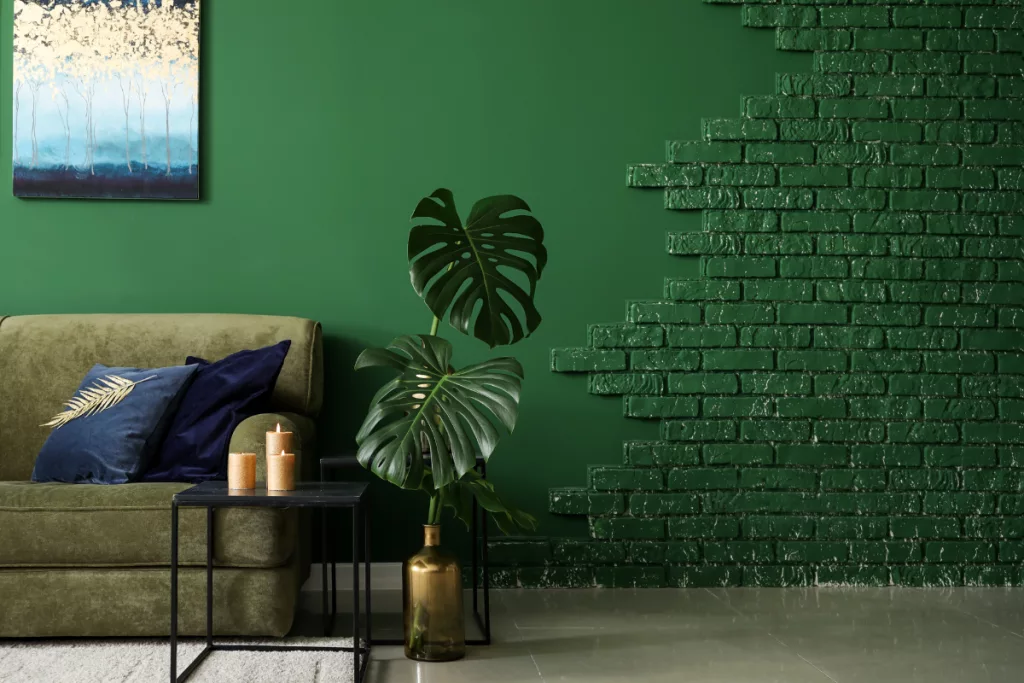
4. Masking and Stencils: Prepare the surface by masking off areas you want to protect from dye application. Use painter’s tape, stickers, or evasive vinyl to create patterns or art pieces on the concrete surface directly. Stencils are a perfect way to incorporate intricate paths, logos, or artistic designs by creating a template using stencil material that can be secured to the concrete surface. Once the stencil is in place, apply the concrete dye and carefully remove it once it dries.
5. Experimenting with Application Tools: Innovative designs often depend on application tools and techniques. Experiment with various devices, such as brushes, rollers, rags, or airbrushes, to achieve diverse effects.
- Brushes: Brushes can create a variety of stroke patterns. Use fan brushes to develop lines, stippling brushes for uneven textures, or even foam brushes for soft, blended applications.
- Rollers: Foam rollers deliver uniform coats of dye for a consistent look, while textured rollers can produce intriguing patterns.
- Rags: Dabbing the dye onto the surface with a rag can create an organic, cloud-like appearance.
- Airbrushes: Airbrushing allows for precision in color application and can be used to create intricate designs and subtle gradients.
Transforming Your Lounge With Coloured Concrete
When it comes to transforming your lounge, colored concrete works wonders. Concrete, an incredibly versatile and durable material, lends itself perfectly to playing with texture, color, and form. Using pigments lets you customize and elevate the standard cement and aggregate mixture into something genuinely personal and visually arresting.
Color does more than tint the concrete—it can dramatically change the ambiance of your space. Be it a warm, inviting tone for your fireplace surround or a cool, calming hue for a statement wall, colored concrete breathes new life into your lounge.
The beauty of colored concrete lies not only in its aesthetic appeal but also in its long-lasting durability. So whether it’s flooring that looks as plush as a Persian rug or a faux-brick wall made of decorative concrete, you can rest assured knowing your stylish enhancements will withstand the test of time.
Cane to achieve any look, feel, or design that speaks to who you are. Contact Toptiles to help create the designs of your dreams.


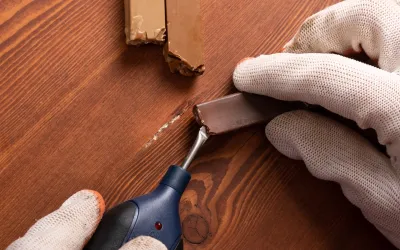
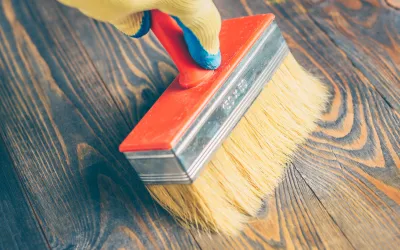
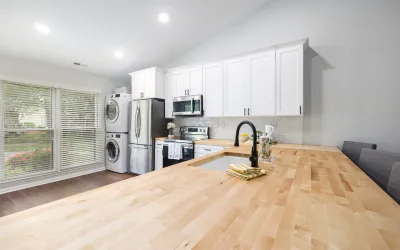
0 Comments